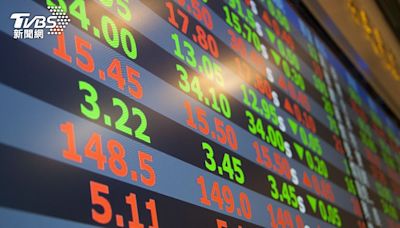搜尋結果
- 169.50-1.00 (-0.59%)2024/05/11 01:31 臺灣股市 已收盤 (報價延遲20分鐘)。
- 昨收170.50開盤171.50委買價169.50委賣價170.00
- 今日價格區間167.00 - 172.0052週價格區間94.00 - 175.00成交量84847 張平均成交量119445 張
- 市值2349.520 億本益比 (最近12個月)16.82營運報告/法說會日期2024-05-14除權除息日-
相關股票
Wikipedia[note 3] is a free content online encyclopedia written and maintained by a community of volunteers, known as Wikipedians, through open collaboration and the use of the wiki-based editing system MediaWiki. Wikipedia is the largest and most-read reference work in history.[3][4] It is consistently ranked as one of the ten most popular ...
- 334 languages
- Online encyclopedia
- United States
Amazon.com, Inc.,[1] doing business as Amazon (/ˈæməzɒn/, AM-ə-zon; UK also /ˈæməzən/, AM-ə-zən), is an American multinational technology company, engaged in e-commerce, cloud computing, online advertising, digital streaming, and artificial intelligence.[5] It is considered one of the Big Five American technology companies; the ...
- Cadabra, Inc. (1994–1995)
- Amazon
- 1,541,000 (December 2022), U.S.: 950,000 (June 2021)
- July 5, 1994; 29 years ago, Bellevue, Washington, U.S.
Earth's ocean. The Pacific Ocean is the largest and deepest of the Earth's five oceanic divisions. It extends from the Arctic Ocean in the north to the Southern Ocean (or, depending on definition, to Antarctica) in the south, and is bounded by the continents of Asia and Australia in the west and the Americas in the east.
- Terminology
- History
- Causes
- Characteristics
- Drawback
- Scales of Intensity and Magnitude
- Tsunami Heights
- Warnings and Predictions
- Mitigation
Tsunami
The term "tsunami" is a borrowing from the Japanese tsunami 津波, meaning "harbour wave." For the plural, one can either follow ordinary English practice and add an s, or use an invariable plural as in the Japanese. Some English speakers alter the word's initial /ts/ to an /s/ by dropping the "t," since English does not natively permit /ts/ at the beginning of words, though the original Japanese pronunciation is /ts/. The term has become commonly accepted in English, although its literal Japane...
Tidal wave
Tsunamis are sometimes referred to as tidal waves. This once-popular term derives from the most common appearance of a tsunami, which is that of an extraordinarily high tidal bore. Tsunamis and tides both produce waves of water that move inland, but in the case of a tsunami, the inland movement of water may be much greater, giving the impression of an incredibly high and forceful tide. In recent years, the term "tidal wave" has fallen out of favour, especially in the scientific community, bec...
Seismic sea wave
The term seismic sea wave is also used to refer to the phenomenon because the waves most often are generated by seismic activity such as earthquakes. Prior to the rise of the use of the term tsunami in English, scientists generally encouraged the use of the term seismic sea wave rather than tidal wave. However, like tidal wave, seismic sea wave is not a completely accurate term, as forces other than earthquakes—including underwater landslides, volcanic eruptions, underwater explosions, land o...
While Japan may have the longest recorded history of tsunamis,[better source needed] the sheer destruction caused by the 2004 Indian Ocean earthquake and tsunami event mark it as the most devastating of its kind in modern times, killing around 230,000 people. The Sumatranregion is also accustomed to tsunamis, with earthquakes of varying magnitudes ...
The principal generation mechanism of a tsunami is the displacement of a substantial volume of water or perturbation of the sea. This displacement of water is usually caused by earthquakes, but can also be attributed to landslides, volcanic eruptions, glacier calvings or more rarely by meteorites and nuclear tests.However, the possibility of a mete...
Tsunamis are caused by earthquakes, landslides, volcanic explosions, glacier calvings, and bolides. They cause damage by two mechanisms: the smashing force of a wall of water travelling at high speed, and the destructive power of a large volume of water draining off the land and carrying a large amount of debris with it, even with waves that do not...
All waveshave a positive and negative peak; that is, a ridge and a trough. In the case of a propagating wave like a tsunami, either may be the first to arrive. If the first part to arrive at the shore is the ridge, a massive breaking wave or sudden flooding will be the first effect noticed on land. However, if the first part to arrive is a trough, ...
As with earthquakes, several attempts have been made to set up scales of tsunami intensity or magnitude to allow comparison between different events.
Several terms are used to describe the different characteristics of tsunami in terms of their height: 1. Amplitude, Wave Height, or Tsunami Height: Refers to the height of a tsunami relative to the normal sea level at the time of the tsunami, which may be tidal High Water, or Low Water. It is different from the crest-to-trough height which is commo...
Drawbacks can serve as a brief warning. People who observe drawback (many survivors report an accompanying sucking sound) can survive only if they immediately run for high ground or seek the upper floors of nearby buildings. In 2004, ten-year-old Tilly Smith of Surrey, England, was on Maikhao beach in Phuket, Thailand with her parents and sister, a...
In some tsunami-prone countries, earthquake engineeringmeasures have been taken to reduce the damage caused onshore. Japan, where tsunami science and response measures first began following a disaster in 1896, has produced ever-more elaborate countermeasures and response plans. The country has built many tsunami walls of up to 12 metres (39 ft) hig...
Deepwater Horizon was a 10-year-old semi-submersible, mobile, floating, dynamically positioned drilling rig that could operate in waters up to 10,000 ft (3,000 m) deep. Built by South Korean company Hyundai Heavy Industries and owned by Transocean, the rig operated under the Marshallese flag of convenience, and was chartered to BP from March 2008 to September 2013.
t. e. The viscosity of a fluid is a measure of its resistance to deformation at a given rate. [1] For liquids, it corresponds to the informal concept of "thickness": for example, syrup has a higher viscosity than water. [2] Viscosity is defined scientifically as a force multiplied by a time divided by an area.
Audio recording of Spitfire fly-past at the 2011 family day at RAF Halton, Buckinghamshire. The Supermarine Spitfire is a British single-seat fighter aircraft used by the Royal Air Force and other Allied countries before, during, and after World War II. Many variants of the Spitfire were built, from the Mk 1 to the Rolls-Royce Griffon-engined ...






